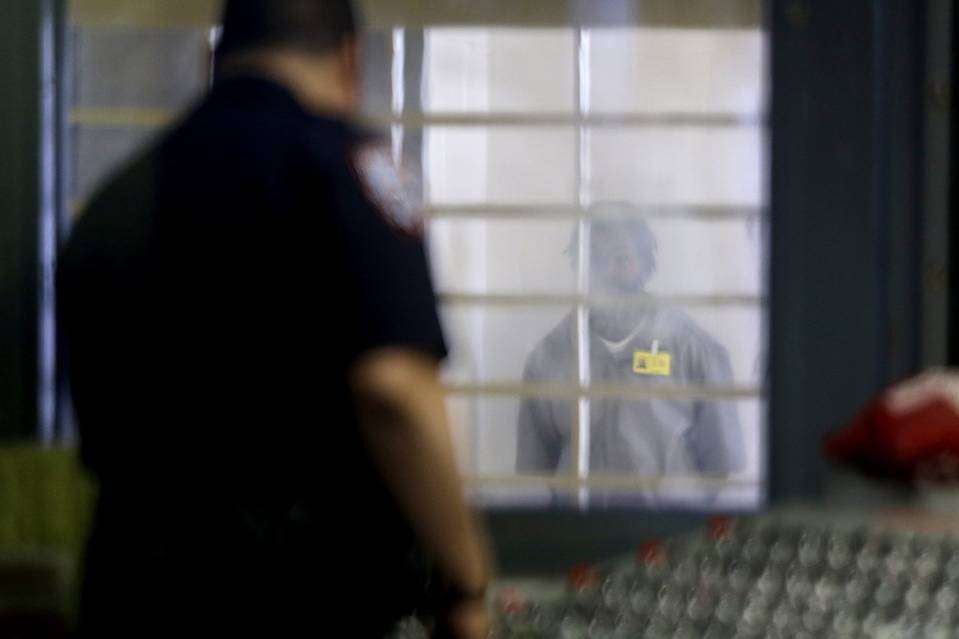
The 800 people with the most jail stays from November 2008 through 2013 accounted for 18,713 incarcerations through December 2014 at a cost of $129 million, according to a study by city officials published Thursday in the American Journal of Public Health.
At least one person was jailed 66 times during the six-year period, the study's data show.
In 88.7% of these detentions, the top charges were misdemeanors. Petit larceny and possession of trace amounts of drugs accounted for more than half of the top charges. Less than 1.2% of the top charges were violent crimes such as murder, rape and felony assault.
As the city confronts record levels of homelessness and officials try to fix a troubled jail system amid a continuing debate over law-enforcement's response to low-level offenses, the study illustrates the costly relationship between the criminal-justice system and a population adrift.
Elizabeth Glazer, director of the Mayor's Office of Criminal Justice, said the study "highlights a sad truth about the toxic combination of substance abuse, mental illness, homelessness and jail," calling it a "needless and expensive cycle."
Many officials and experts said repeated incarceration is inefficient and ineffective. Expensive medical treatment in custody can't be expected to improve long-term health, and sporadic detention doesn't contribute to public safety, the study concluded.
Comment: It seems that the government, and most of society, turns a blind eye to the struggles of those suffering from addiction and mental illness and would rather have them suffering with repetitive incarceration than to be truly helped. It's a sign of our society's true nature when, instead of trying to help these people we would rather that disappear from our eyes into the jail system, even though they are not being helped in prison and aren't even engaging in violent behavior. A healthy society would have systems in place to help such people, but in the US, we just want them to go away.
But others said that police have a responsibility to arrest people, even for minor offenses, and that short-term detention can serve a vital public-safety role.
Jon M. Shane, associate professor at John Jay College of Criminal Justice and a former police officer in Newark, said the criminal-justice system isn't meant to correct behavioral health issues.
"Police in general want to be out of the mental-health business," he said. "Police leaders would like nothing more than to have the mental-health community and advocates do that."
The study compared the 800 most frequently incarcerated and their arrest records over six years against a control group of the same size. It was written by staff doctors at the city's Health and Hospitals Corp., which runs health care at the city jails.
Compared with the control group, the 800 frequently incarcerated were older, more in need of medical care in jail and more than twice as likely to be diagnosed with severe mental illness.
More than half were homeless, and 97% reported significant substance abuse. Crack and cocaine use was reported in 83.5% of the group, and 22% were treated for alcohol withdrawal in jail.
After arrest, such defendants are held at Rikers Island, the city's main jail complex, or local detention facilities and are typically released within days, sometimes only to return to jail in a matter of weeks, officials said.
"Obviously, if you look at these numbers, it calls for a change in policy," said Administrative Judge Matthew D'Emic, who presides over the Brooklyn Mental Health Court, which steers felony and misdemeanor defendants through treatment programs instead of jail.
The issue gets to a broader concern, Judge D'Emic said, about why people are being held in jail "if we could release them safely into the community."
To be sure, the so-called frequent fliers represent a small subset of the city's jail population, which averages about 11,000, and some of them have been charged with violent crimes.
Judge D'Emic recalled one defendant who had 48 misdemeanor arrests before being arrested on a felony and landing in his courtroom. He said he wondered whether the felony could have been averted had the defendant been engaged in a court program earlier.
Virginia Barber-Rioja, clinical director of Brooklyn's mental-health court diversion programs for the nonprofit Education & Assistance Corp., said the city was looking beyond mental illness to address the factors that contribute to regular misdemeanor offenses and recidivism, including homelessness, a lack of community connections, a history of trauma and substance abuse.
Still, there aren't enough social services or housing options to accommodate the demand, Ms. Barber-Rioja said.
Last fall, Mayor Bill de Blasio's office released a task-force report on the mentally ill in the criminal-justice system, calling for a four-year, $130 million investment for measures including new training for police and correctional officers, more screening of defendants and expanded supportive housing.
By October, the city expects about 120 new units of supportive permanent housing, with access to mental-health and substance-abuse programs, to be available for people with behavioral issues. Ultimately, 267 such units are being funded, officials said.
"Permanent supportive housing has been shown to help stabilize this population, connecting them to needed health care and dramatically reducing shelter stays and time in jail," said Ms. Glazer of the Mayor's Office of Criminal Justice.



They needed a study to confirm what everyone already knew? So, will it make a difference? No, of course not, that would require years of more studies to be done first.